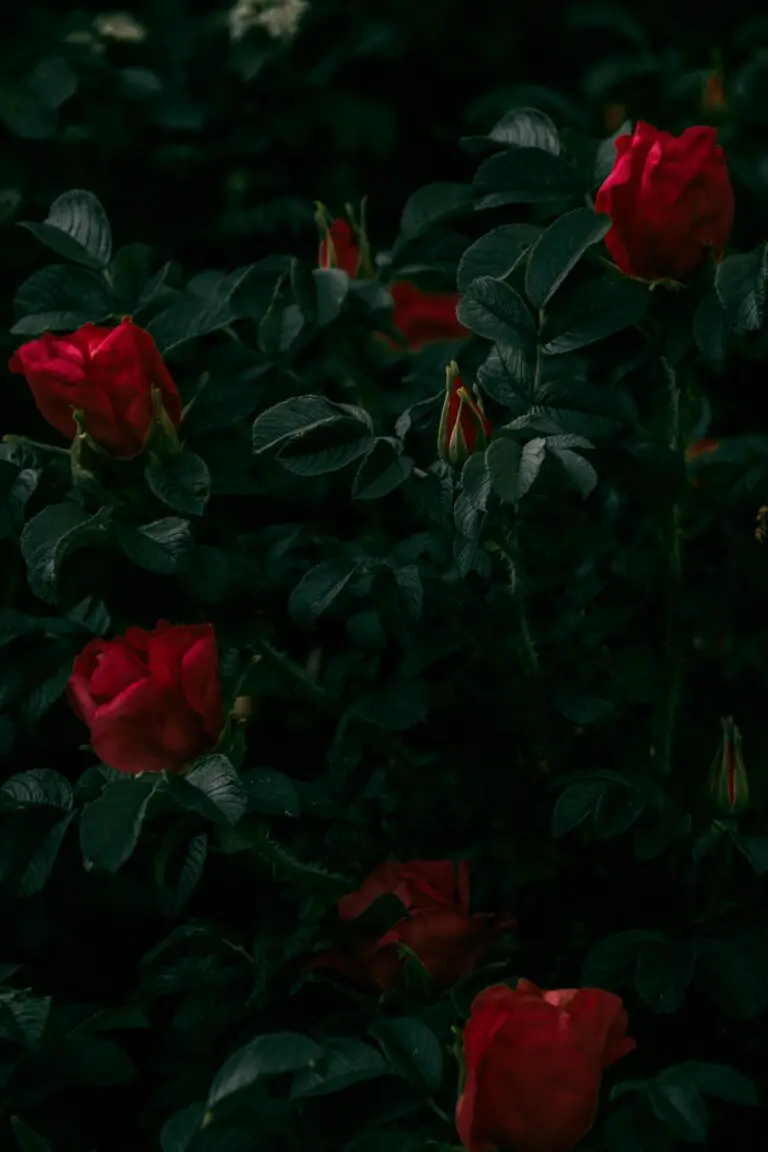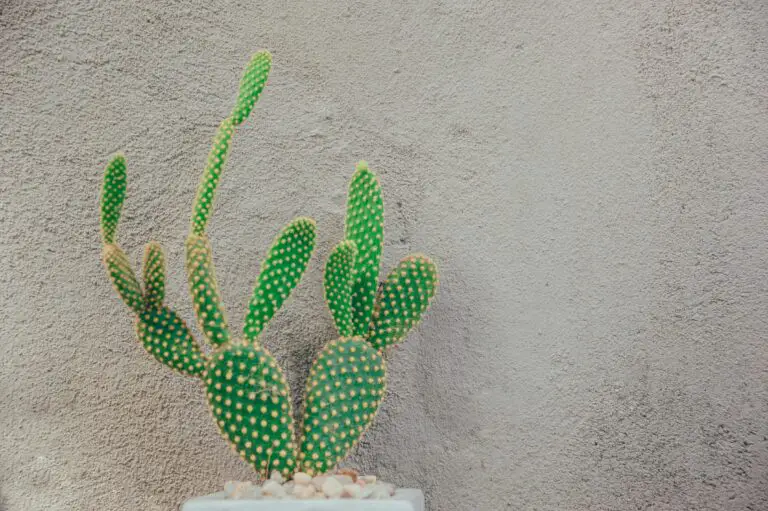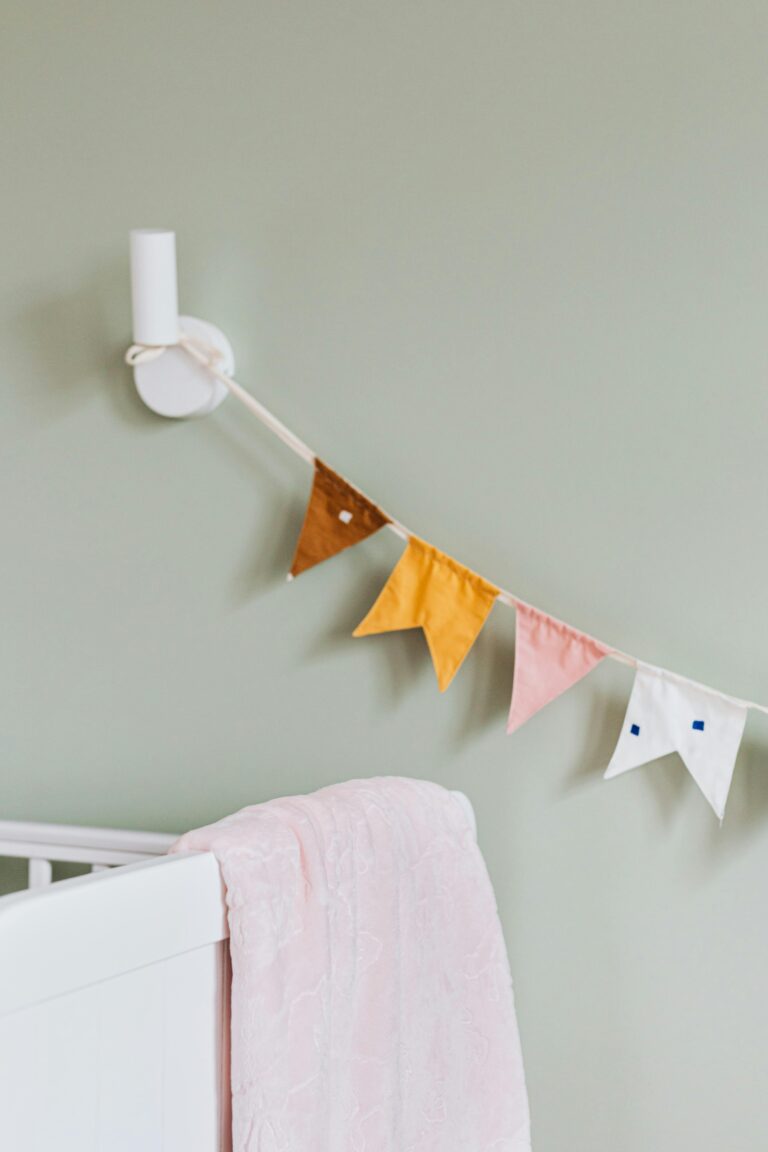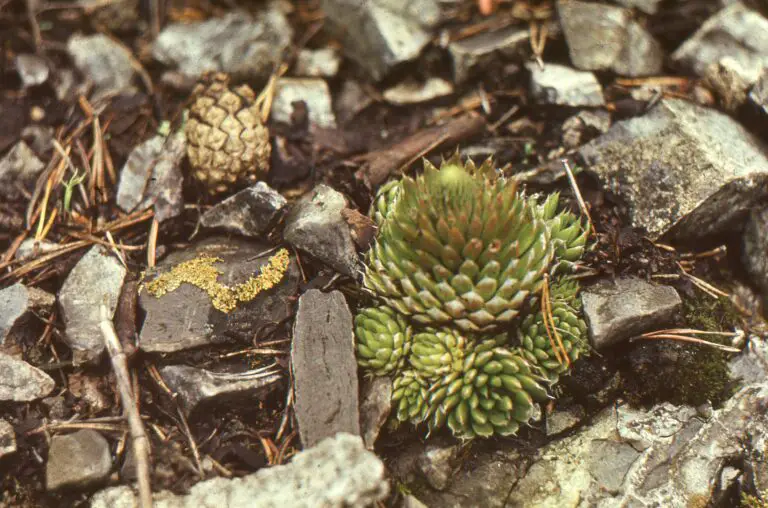Introduction to Sempervivum
Ever wondered what succulent species can jazz up your garden with minimal fuss? Enter the sempervivum, a charming addition to any green haven that captivates both rookies and the most seasoned of gardeners alike. Picture these resilient rosettes hugging rocky crevices or neatly dotting an alpine garden container—a testament to their adaptability and allure.
With a lineage that hails from the high altitudes of Europe and the Mediterranean, sempervivums carry with them a story of survival and versatility. These hardy plants, often fondly referred to as ‘houseleeks’ or ‘hen and chicks,’ have conquered the hearts of many with their ability to thrive in tough environments. Imagine a cluster of sempervivums blanketing a sunny slope, unphased by the glaring sun or a cold snap—this is the art of survival at its finest!
Digging into the sempervivum’s popularity, it’s clear as day why they’re considered quintessential to a succulent garden. Their ease of care, drought tolerance, and diverse appearance—from jade greens to ruby reds—make them not just a plant but a living tapestry for spaces both big and small. And let’s not overlook the joy of watching their ‘chicks’ spring forth, ready to root and start their own miniature communities.
For those embarking on their gardening journey, sempervivums serve as a confidence-boosting start. Just picture placing that first ‘chick’ in a pot and watching it flourish with the slightest of care. And for the experienced? A chance to sculpt a succulent masterpiece, intertwining textures and hues for a botanical work of art.
Not just a feast for the eyes, sempervivums have woven their way into folklore and practicality. Historically nestled on rooftops to ward off lightning or evil, these unassuming heroes of the plant world have redefined ‘green roofing’ long before it became a trend. They have this magical charm that combines rustic tradition with modern ecological sensibility, making them not just plants but symbols of a greener, more sustainable way of life.
So, if you’ve got a penchant for plants with personality and persistence, sempervivums are your go-to pals. Whether nestled in your outdoor garden or perched in a sunny window, they’re a low-maintenance, high-impact element that never ceases to amaze. And for those eager to dive deeper into the sempervivum world, there’s plenty to discover—and that’s just the beginning!
Why Sempervivum is a Must-Have for Your Garden
When it comes to planting a garden that thrives with minimal fuss, adding sempervivum to your arsenal is akin to finding treasure. These succulent beauties offer a plethora of benefits that extend way beyond their striking appearance. Let’s delve into the green world of sempervivum and explore why they’re a top pick for garden enthusiasts and the eco-conscious alike.
Known for their exceptional hardiness, sempervivums are survivors, withstanding extreme weather conditions where other plants might easily succumb. Imagine a plant that remains unfazed by scorching sun or biting frost, a true testament to its environmental resilience. If stories of plants flourishing on rocky outcrops or thriving atop rustic roofs amaze you, chances are, you’ve already admired these tough yet charming troopers.

For those desirous of a green space but strapped for time, sempervivum offers a low-maintenance haven. These plants are remarkably self-sufficient, requiring little watering and no regular pruning. Say goodbye to the back-breaking labor of constant gardening, and hello to more leisurely weekends savoring the beauty of your fuss-free succulent display. This care-free nature extends to their nutrient requirements too, flourishing even in poor soil—a boon for areas less blessed with fertile ground.
Another brilliant aspect of sempervivum is its ease of propagation. Imagine attending a garden soiree, your eyes catching on a beautiful rosette. With the host’s permission, a single leaf is all you need to begin your own sempervivum journey. Within weeks, that lone leaf turns into a burgeoning clump of colorful rosettes, each resembling a jeweled crown resting daintily upon the soil. This trait makes them a gift that truly keeps on giving, both in your garden and as living treasures shared with friends and family.
Insight into the sempervivum’s growth habits and care reveals a world where beauty and resilience intersect with ease. Whether as a ground cover that laughs in the face of drought or as a companion plant that melds perfectly with perennial borders, sempervivum is truly a gardener’s ally. For a deep dive into the world of succulents, explore our ultimate guide to succulent care and unearth the secrets to perfect plant growth.
Lastly, incorporating sempervivum in your garden isn’t just a visual delight; it’s a nod to biodiversity. These plants are pollinator-friendly, inviting a host of beneficial insects into your garden. With each sempervivum variety serving as a unique draw for bees, butterflies, and other helpful critters, your garden becomes a bustling hub of ecological activity. The combination of environmental resilience, ease of care, propagation simplicity, and ecological benefits firmly establishes sempervivum as an essential addition to any garden, where they represent nature’s tenacity at its finest.
Exploring the Different Types of Sempervivum
Have you ever marveled at the sheer variety of sempervivums adorning gardens and windowsills? Also known as ‘houseleeks’ or ‘hen and chicks’, these resilient succulents offer a symphony of shapes, shades, and sizes. In our journey through sempervivum types, we’ll delve into their distinctive traits and the reasons they’re loved by plant enthusiasts worldwide. Get ready to discover a succulent that might just steal your green heart!
Each sempervivum brings its own flavor to the table. Take the ‘Sempervivum tectorum’, for instance, known for its iconic rosette pattern and plump, green leaves blushed with a hint of red – a true spectacle when the sun kisses its tips. Or consider the ‘Sempervivum arachnoideum’, with cobweb-like filaments that glisten with dew in the morning light, creating an ethereal display.

What’s astonishing about these sturdy plants is not just their striking appearance – it’s their adaptability and resilience. In a world where gardeners battle with ever-changing climates, sempervivums stand as unwavering allies. Whether they’re nestled in rocky crevices or sprawled across a green roof, they grow with vigor, undaunted by drought and frost.
Perhaps you’ll be inspired by the ‘Sempervivum calcareum’, which flaunts red-tipped leaves that seem to be painted by a master artist, or the ‘Sempervivum heuffelii’, which radiates with purple and green shades, mesmerizing anyone fortunate enough to glance its way. Each variant not only enhances your garden’s aesthetic but connects you to a community of nature lovers who cherish these living jewels.
It’s difficult not to be enamored with the visual appeal of the sempervivum species. When you observe their unique characteristics up close – the way light dances off their geometric leaves or the rich tapestry of colors they display – you’ll understand why they hold such an esteemed spot in the horticultural world. The sempervivum, in all its forms, beckons us to an enchanting succulent realm, inviting curiosity and offering tranquility.
Top Sempervivum Varieties for a Stunning Succulent Display
When we talk about a succulent that truly stands out in a garden, sempervivums are undoubtedly the star of the show. These hardy plants, fondly known as “houseleeks” or “hens and chicks,” come in a kaleidoscope of colors and forms that can transform any space into a tapestry of living art. Let’s delve into the world of sempervivum types, where each variety is a masterpiece in its own right, ready to adorn your garden with their resilient charm.
Imagine a succulent that mirrors the hues of a twilight sky – that’s the ‘Bronco’ variety, with its deep red-purple leaves that can make any garden pop with color. Then there’s the ‘Cobweb’ sempervivum, weaving a delicate web of white fibers over its rosettes that captivate onlookers. It’s not just about visual appeal, however. These varieties are also champions of survival, braving extreme conditions from scorching sun to freezing temperatures with remarkable grace.
For those who appreciate the subtle beauty, we’ve got the sempervivum ‘Green Wheel’; it’s like a convoy of uniform green rosettes, rolling out across your rockery or crevices, offering a serene green vista. On the striking end of the spectrum lies ‘Pacific Red Tide,’ with rosettes that resemble fiery blooms. Create a succulent garden that echoes the vigor of the ocean with this vibrant choice.
Not to be overlooked, ‘Royal Ruby’ steals hearts with its rich burgundy rosettes highlighted by frosted tips. It’s as if each leaf is carefully dipped in a royal palette. This variety is perfect for creating a focal point in containers or as a groundcover radiating regal flair. But what if you’re drawn to pastels? The ‘Silverine’ variety comes to the rescue, with its silvery leaves that glow like the moon amid your nocturnal garden scene.

So whether you’re planning to line your driveway with these jewels or tuck them into a rocky alcove, sempervivum varieties like ‘Bronco’, ‘Cobweb’, ‘Green Wheel’, ‘Pacific Red Tide’, and ‘Royal Ruby’ have got your garden’s aesthetic needs covered. With their unique appearance and low maintenance nature, sempervivums are your go-to choice for a stunning visual feast that lives on, season after season.
Highlighting some of the most beautiful and unique sempervivum types isn’t just about visuals. It’s about crafting a narrative in your garden, one that speaks of resilience, vibrancy, and perpetual beauty. So the next time you ponder upon adding character to your garden, remember these sempervivum varieties hold the key to an eye-catching display that commands attention and awe from every passerby.
Caring for Your Sempervivum: Tips and Tricks
Thrive like a sempervivum in your natural habitat with this essential guide to caring for these resilient succulents. Known for their hardiness and diverse forms, sempervivums are a favorite among green thumbs, and taking care of them can be a delightful experience—if you know the right tips and tricks!
Creating the Ideal Home: Soil Conditions for Sempervivums
Begin by considering where your sempervivums will lay roots. These succulents adore well-draining soil, and an ideal mix might include sand and perlite to prevent water retention. Imagine a rocky crevice high in the European mountains—that’s the kind of drainage you’re aiming for! This helps mimic their natural environment and keeps their roots cozy, dry, and far from dreaded root rot.
Watering Regimens: Less is More
Remember this succulent mantra: “When in doubt, dry out.” Sempervivums are not thirsty plants and prefer their soil to dry completely between waterings. Use the “soak and dry” method, drenching them and then letting the soil dry out completely. Overwatering can send your sempervivum to an early grave, so treat water like a scarce mountain resource—they’re built to survive drought conditions after all!
Sunlight Exposure: Basking in the Perfect Amount
When it comes to basking in the sun, sempervivums are like tourists on a Mediterranean vacation—they love it, but there’s a sweet spot. Full to partial sunlight is their jam, providing your plants with enough light to maintain vibrant colors without wilting under a scorching sun. Just like us, they need protection from the midday intensity, so a little afternoon shade can go a long way.
Watch this video to see how sempervivums can thrive with the proper care and learn some additional tips from seasoned growers:
With these tips in mind, get ready to watch your sempervivum varieties flourish. Whether perched on a sunny windowsill or nestled in a rock garden, your sempervivums will be a testament to your gardening prowess—with a little help from nature’s design, of course. Remember, you’re not just growing plants; you’re curating an experience that connects you to the rugged beauty of an alpine scape, right in your own home.
The Art of Propagating Sempervivum
Welcome to the lush world of sempervivum propagation! If you’re all about greening up your space with these hardy and adorable succulents, you’ve hit the jackpot. Propagating sempervivum is like playing Nature’s version of ‘copy-paste,’ allowing you to multiply your succulent collection efficiently. It’s about as rewarding as it gets in the plant world, and trust me, once you start, you’ll feel like a proud gardener of an ever-expanding succulent empire!
First things first, sempervivum, also known as ‘hen and chicks,’ thrive on a simple mantra—minimal fuss, maximum flourish. To get started, you’ll need a healthy ‘hen,’ which is the mother plant. The ‘chicks’ are the offspring that emerge around it. These little guys are key to your propagation success. With the right conditions, you’ll see that your sempervivum not only survives but thrives, giving you plenty of new plants to spread around or share with fellow green thumbs.
Step-by-Step Sempervivum Cloning
Now, let’s dive into the how-to. Once a ‘chick’ is well-formed and the weather whispers ‘go time,’ (we’re talking spring or summer), gently tug the baby away from the mother plant. It’s akin to plucking a grape from the bunch—no Hercules strength needed, just a tender pull. Your little chick should come away with some roots attached; these are precious, so treat them like the gold they are.
Next, let your chick rest. Not in a hammock with a cocktail, but by laying it on some well-draining soil and giving it some space to spread its roots, literally. This rest period is crucial—it’s the deep breath before the plunge. After a day or two of hard-earned rest, it’s time to nestle your chick into its new home, a cozy pot filled with succulent-friendly soil. These youngsters aren’t super needy; just make sure they get some indirect sunlight while they establish their new territory.
The magic of sempervivum is in their low-maintenance lifestyle. They don’t demand constant attention. In fact, they flourish with a bit of benign neglect—a water me when you remember kind of deal. And before you know it, your chicks will be ready to produce their own offspring. Talk about a family legacy!
Keen on seeing the propagation in action? Check out this insightful video for a visual walkthrough that’ll have you propagating sempervivum like a pro.
Remember, the key to a thriving sempervivum collection is patience and a gentle touch. Give your chicks time to adjust to their new environment, and you’ll be rewarded with a garden brimming with these succulent treasures. One last pro tip: don’t hesitate to experiment! Each sempervivum variety can bring a different vibe to your garden palette, so play around and find the types that resonate with your green thumb personality.
Designing with Sempervivum: Landscaping Ideas
Imagine stepping into a garden where every glance rewards you with a tapestry of textures and colors, a result of the masterful use of sempervivum varieties. These hardy succulents, fondly known as “hens and chicks”, can transform any space into an alpine wonderland or a Mediterranean escape. Let’s unearth some innovative ways to integrate these succulent gems into your garden.
Rockeries Reborn
Rock gardens and alpine landscapes provide the perfect canvas for sempervivum. Their rosette forms and diverse hues echo the natural beauty of rocky slopes. Nestling them into a rocky crevice or along a gravel pathway not only reflects their rugged origin but creates a dynamic visual that resembles a living mosaic. Consider varieties like ‘Sempervivum tectorum’, which boasts deep green leaves kissed with red tips, to mimic the sunset bouncing off a mountain range.
Container Creativity
For those with limited space or a penchant for patio gardens, containers become a stage for sempervivum’s striking silhouettes. Paired with terracotta pots or modern geometric planters, sempervivum brings a sculptural element to your outdoor living area. Try clustering different types, such as ‘Sempervivum arachnoideum’, the cobweb houseleek, which adds a whimsical touch with its white web-like filaments entwined across the foliage.
Garden Tapestry
Interspersing sempervivum among other plants can create intriguing contrasts and highlight their unique shapes. Imagine them surrounding the base of a tall grass or peeking out beneath a canopy of lavender, the combination of textures and colors telling an engaging story. Not only do they look magnificent, but they’re also champions of low-maintenance gardening, reducing your workload while enhancing the visual appeal of your green space.

The versatility of sempervivum types cannot be overstated. Whether dotting them around stone staircases for a rustic charm or crafting a dedicated sempervivum centerpiece in your garden, these succulents are guaranteed to captivate. Their drought-tolerance and resilience make them essential players in the sustainable garden playbook, ready to elevate any landscape with ease.
Troubleshooting Common Sempervivum Problems
When it comes to maintaining a vibrant sempervivum collection, a keen eye for detail is your best defense against common issues. It’s not just about admiring those beautiful rosettes; it’s about noticing when they’re not their usual perky selves. Let’s dive into the nitty-gritty of sempervivum care and address some pesky problems you might face.
Challenges with Pests: Nature’s Uninvited Guests
You might find your sempervivum plants playing host to aphids, mealybugs, or spider mites. These critters are as unwelcome as ants at a picnic! If you notice your plants looking a bit lackluster and there’s a sticky residue on the leaves, call the pest patrol, because you’ve got aphids. Mealybugs, on the other hand, look like tiny cotton dwellers conspiring to suck the life out of your succulents. And let’s not forget spider mites, which create fine silk webs easier to spot than a rain cloud in the desert. Natural predators like ladybugs are true allies in this battle, though you might need to step in with insecticidal soap or neem oil to show those pests the door.
Water Woes: The Balancing Act
Now, I’ve seen many a plant parent with a heavy watering hand, and sempervivums, my friends, are not fans of soggy feet. Picture this: you find your usually plump and happy sempervivum looking a bit deflated, leaves yellowing as if it’s lost its will to thrive. You may have fallen prey to overwatering. Conversely, under-watering can leave them parched, resembling a week-old salad. The key is to water infrequently but thoroughly, allowing the soil to dry out between sessions.
Sunlight and Shade: Finding the Sweet Spot
Just like Goldilocks finding the perfect porridge, your sempervivums need that just-right amount of light. Too little, and they stretch out in a process called etiolation, seeking the sun like a plant version of a sunbather. Too much, though, and they can get a sunburn. Yes, plants get sunburned too! Their leaves will show signs of stress with a dull, discolored appearance. Strive for bright, indirect light to keep them compact and colorful, and consider using a sheer curtain for some stylish SPF protection.
Paying attention to these signs can mean the difference between a sempervivum that simply survives and one that thrives with vigor. Remember, your sempervivum garden should be a source of joy, not distress. With a bit of TLC and the right know-how, you’ll keep your charming chicks and hens in tip-top shape.
For a more visual guide on fixing these issues, let’s take a peek at this helpful video:
Frequently Asked Questions
Embarking on a journey through the diverse world of sempervivums? Let’s address some whispers from the windswept alpine cliffs and sunny windowsills alike, where these resilient rosettes thrive. Take a seat, green-thumb aficionados and curious beginners, for a tête-à-tête with the sempervivum types in your garden.
How Hardy Are Sempervivum Varieties, Really?
Picture this: A sempervivum tucking itself in for a winter slumber under a blanket of snow, only to burst forth in the spring with the enthusiasm of a sprightly lamb. Coined as ‘live forever’, sempervivums are the Olympians of the succulent world. Far from delicate darlings, these tough-as-nails beauties are renowned for shrugging off freezing temperatures as low as -30°F (-34°C). From ‘Ruby Heart’ to ‘Emerald Empress’, their hardiness unites them, soothing the furrowed brows of gardeners facing frosty forecasts.
Do Sempervivum Types Desire the Dazzle of Full Sun?
As if sunbathing on the Mediterranean coastline, sempervivums relish sunny spots. Yet, they are no strangers to adaptability. Although their penchant for full sun is well-documented, resemble sun worshipers, they’re quite diplomatic, accommodating dappled shade without a hint of protest. Remember the ‘Bronze Beauties’ and ‘Silver Kings’ showing off their sun-kissed hues? Ah, the splendor they achieve with just the right touch of Apollo’s chariot rays!
Unveiling the Flowering Secrets of Sempervivum
In a dramatic display that rivals any Shakespearean play, sempervivums flower once and, alas, exit stage left. But not before a grand finale! ‘Red Rubin’s grandeur or ‘Pacific Blue Ice’s elegance, they all send up an impressive flower stalk, dotted with star-like blossoms, inviting a buzz of pollinator admirers. As their lifecycle comes full circle, worry not—pups have likely huddled around the mother plant, preparing to continue the captivating performance.
Where to Find Quality Sempervivum Specimens
As you venture into the fascinating world of sempervivums, also known as hens and chicks, you’ll quickly find that sourcing quality specimens is key to a thriving succulent garden. For enthusiasts eager to curate a diverse collection, it’s important to know exactly where to find the healthiest and most varied sempervivum types.
Local nurseries are treasure troves for gardeners, offering a hands-on experience. Imagine walking through green aisles, where each table is a palette of textures and hues only nature could design. The sempervivums, with their bold rosettes, beckon from every corner. Local experts can guide you on your selection and provide valuable advice on care and companion planting, making it an educational outing as well.

However, not everyone has access to specialty nurseries, and that’s where online retailers come into play. These digital greenhouses offer extensive catalogs that often feature rare and unusual sempervivum types, each with a detailed description and care instructions. From the comfort of your home, you can select the perfect candidates for your garden and have them safely delivered to your doorstep. This convenient option ensures that no matter where you reside, you can have a rich variety of sempervivums enriching your garden.
When searching for the best sources for sempervivum plants, consider checking out plant swaps and local gardening clubs too. These environments are brimming with passionate gardeners who often have propagated their own collections and are eager to exchange or sell their cherished varieties. Engaging with fellow sempervivum aficionados not only enriches your collection but your knowledge as well, as you learn about the experiences and preferences of other gardeners.
Remember, whether you decide to obtain your sempervivums from the local nursery, an online retailer, or a community event, always ensure that the source is reputable. Healthy, well-grown plants are the foundation of your sempervivum paradise, so choose sellers who emphasize plant welfare and offer robust, disease-free specimens. With these tips in mind, your hunt for the finest sempervivum types is bound to be a rewarding journey filled with vibrant discoveries.
Sempervivum Conservation and Ethical Cultivation
When you whisper the word “sempervivum,” you’re not just invoking the name of a hardy succulent; you are calling upon centuries of survival in some of the most unwelcoming landscapes. Yet, this resilience isn’t just a marvel; it’s a clarion call for conservation. Imagine a mountain range stripped of its floral emblems or a rocky outcrop devoid of these living jewels. That’s a scene no nature enthusiast wants to witness. Hence, protecting sempervivum species is akin to guarding nature’s masterpieces.

Consider the humble Houseleek, a sempervivum type that has thrived on rooftops since Roman times. Its very existence, flourishing in the nooks and crannies of human habitats, is a testament to nature’s adaptability. Yet, adaptability should not be mistaken for invincibility. The growing demand for these ornamental plants has led to overharvesting in the wild, pushing natural populations to the brink. Advocating for their conservation is not just about maintaining biodiversity; it’s about respecting the delicate balance of our ecosystems.
Now let’s talk cultivation – but not the kind that strips the earth bare. Ethical cultivation of sempervivum means embracing techniques that sustain rather than exploit. We’re dancing with the idea of permaculture principles, where every drop of water is a gift and every snippet of leaf a potential new life. Gardeners are the unsung heroes in this narrative, turning to seed propagation over wild collection, ensuring these succulents can continue to thrive without plundering their natural habitats.
Think of it this way: every sempervivum planted with care is a step towards ecological mindfulness. There’s an empowering ripple effect when you choose to cultivate responsibly. Suddenly, your garden isn’t just a space of beauty; it’s a sanctuary of conservation. Through educating oneself and others about the need for sustainable horticulture practices, we embolden a movement that reveres life in all forms, recognizing that what we nurture today will be the legacy we leave for tomorrow’s natural world.
Real-Life Inspiration in Conservation
Casting a spotlight on real-life conservation champions, let’s take inspiration from the Alpine regions where initiatives to preserve native sempervivum species are in full swing. Volunteers scale craggy terrains to monitor and document the health of these succulent populations, ensuring they’re not edged out by invasive species or human encroachment. These efforts resonate with the idea that every individual plant is valuable, painting a broader picture of environmental stewardship.
By doing so, we’re not just safeguarding sempervivum types; we’re actively participating in a shared duty to protect our planet’s botanical treasures. Furthermore, this vigilance translates into an increased awareness of the interconnectedness between plant conservation and our own survival, emphasizing that when we champion the cause of plants like sempervivum, we’re ultimately cultivating a better future for all species, including ourselves.
In Conclusion
As we’ve journeyed through the world of sempervivum types, it’s hard not to be in awe of their resilience and beauty. From the humble rooftop gardens of Europe to the modern succulent displays in urban dwellings, these plants capture our imagination and add a touch of evergreen charm to our lives. There’s a sempervivum for every preference – whether you’re drawn to the vivid ‘Ruby Hearts’ or the understated elegance of ‘Cobweb Buttons’.
Take Jane, for example, a city dweller who transformed her drab apartment balcony into a lush escape with a variety of sempervivums. Or the retired couple, Tom and Sue, who have made it their mission to find rare sempervivum hybrids to showcase in community garden tours. These stories are real-life testaments to the versatility and joys of curating a collection of these hardy succulents.
So why not become a part of this green movement? Imagine having a slice of nature’s resilience right at your fingertips. Picture a compact garden that thrives with minimal fuss – a testament to the toughness and adaptability of sempervivums. There’s something incredibly rewarding about nurturing these little plants, each with its unique character, and watching them flourish against the odds.
Whether you’re a seasoned gardener or a curious novice, sempervivums are an essential addition to your green space. They’re not just plants; they’re a lifestyle, a statement of sustainability, and a source of endless fascination. With sempervivums, you tap into a lineage of survival artists, and in doing so, you might just unearth a passion for the modest brilliance of succulents.
So, what are you waiting for? Let’s get our hands dirty and our hearts full with the limitless possibilities of sempervivum varieties. Grow them, share them, and celebrate the unique tapestry they weave in your life. It’s time to start or expand your personal succulent oasis.
And if you’re looking for inspiration, here’s a video that showcases the magnificent diversity of sempervivum types:



